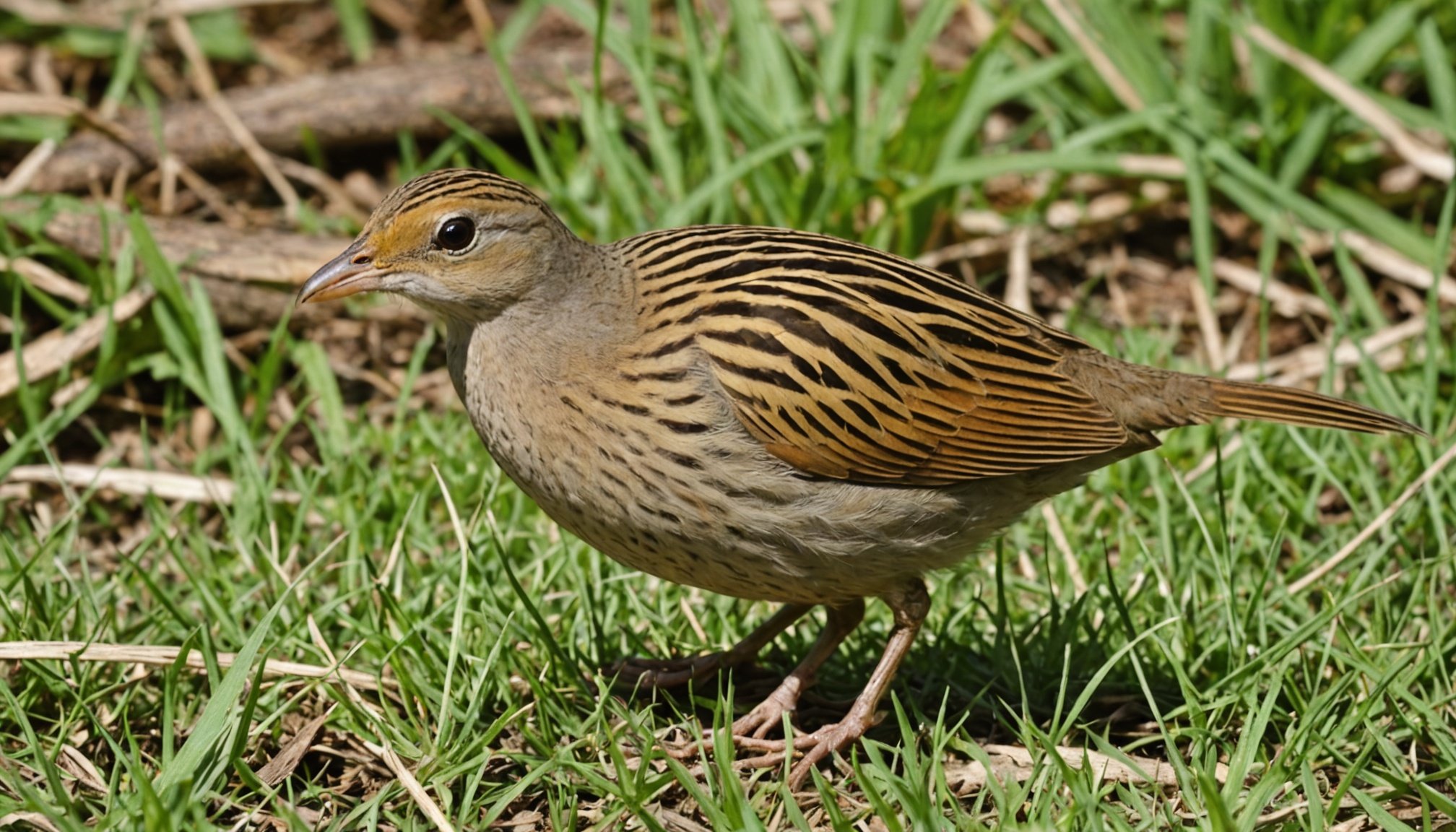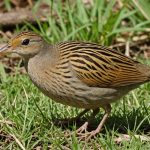Overview of the Corncrake Conservation Efforts
In the delicate tapestry of the UK ecosystem, the corncrake holds a unique and significant place. This elusive bird, once widespread, is now emblematic of the conservation struggles faced by many species. The corncrake plays a crucial role in maintaining biodiversity, often associated with traditional hay meadows, highlighting its importance in our natural landscape.
Presently, the corncrake population is dwindling, attributing to habitat loss and changing agricultural practices. The decline in suitable breeding grounds, primarily due to intensified farming and urban spread, marks a substantial threat to its survival. These pressures highlight the bird’s precarious status, necessitating immediate action.
A lire également : Top Strategies for UK Pet Owners to Protect Local Wildlife While Enjoying Countryside Walks
UK zoos have emerged as pivotal allies in corncrake conservation. With their advanced breeding programs, zoos aim not only to bolster the corncrake population but also to raise public awareness about their plight. Such efforts are an integral component of broader conservation strategies.
Success in these conservation initiatives relies heavily on collaboration between zoos, conservationists, and governmental bodies. Through coordinated breeding efforts and habitat management practices, there is potential not only to preserve existing populations but also to restore the corncrake’s rightful place in the UK’s vibrant wildlife community.
A lire également : Top Strategies for Enhancing Wildlife Habitats in UK Urban Green Spaces
UK Zoo Breeding Programs for Corncrakes
In the dynamic world of corncrake conservation, the involvement of UK zoos is nothing short of groundbreaking. Leading the charge in these efforts are institutions like the Royal Zoological Society of Scotland and Chester Zoo, renowned for their progressive zoo breeding programs. These programs are meticulously designed to facilitate the species revival, employing state-of-the-art conservation techniques.
Breeding methodologies at these zoos are both sophisticated and advanced. They focus on creating conditions that closely mimic the natural habitats of corncrakes. This involves precise control over climate conditions, diet, and breeding cycles. Zoos also monitor genetic diversity meticulously to strengthen the resilience of the population.
The success rates of these breeding programs have been promising, with several zoos reporting significant increases in corncrake numbers. These achievements are often highlighted by the successful reintegration of bred individuals into the wild, where they can contribute to natural populations.
Noteworthy accomplishments include the doubling of breeding pairs within certain facilities, showcasing the potential held by these programs. UK zoos continue to serve as custodians of this endangered species, leading the path towards a hopeful revival and ensuring that the corncrakes once again thrive in their natural abode.
Challenges Facing Corncrake Conservation
Navigating the conservation challenges that beset the corncrake is an arduous task steeped in complexity. A primary obstacle is habitat loss, predominantly fueled by aggressive farming techniques and unrestrained urban sprawl. These factors strip the landscape of viable breeding grounds, leaving the bird vulnerable to population decline.
Human impact further exacerbates these challenges, often unintentionally impeding conservation efforts. Awareness and engagement from the public remain insufficient, curtailing the potential for community-driven support and advocacy. Raising consciousness around corncrake conservation could galvanize necessary backing for preserving their habitats.
Urbanisation presents formidable threats. Cities and towns encroach upon rural spaces crucial for the corncrake’s survival, undermining the efforts made by conservationists to maintain and restore these critical environments.
Moreover, intensified agricultural practices disrupt the delicate balance essential for the species’ sustenance. These practices often ignore the needs of wildlife, focusing on short-term gains rather than long-term ecological equilibrium.
Recognising and addressing these threats is vital for the development of effective conservation strategies. By harnessing better public awareness campaigns and encouraging sustainable agricultural practices, there is hope for overcoming these tremendous challenges facing corncrakes today.
Collaboration with Conservation Organizations
Conservation collaborations are pivotal in addressing challenges faced by the corncrake. The synergy between NGO partnerships and zoos amplifies efforts, pooling resources and knowledge for robust conservation tactics. For instance, partnerships with organisations such as the RSPB have led to coordinated breeding initiatives, enhancing the habitat restoration process. These initiatives are vital, as habitat loss remains a pressing threat.
Governmental policies serve as crucial backbones for these undertakings. Supportive policies streamline operations, ensuring alignment between governmental bodies and conservation groups. This harmonisation enhances the effectiveness of breeding programs, offering a regulatory framework that aids in the preservation and revival of the corncrake population.
Successful cases of collaboration reveal optimistic outcomes. A notable example is the collaborative efforts led by the Royal Zoological Society of Scotland and RSPB, which have bolstered the species’ chances of survival. These collaborative efforts not only increase public awareness but also demonstrate the power of unified actions in conservation.
And thus, leveraging these partnerships can be the key to safeguarding the corncrake and securing its future in the UK landscape. As these partnerships evolve, they highlight a progressive path towards species sustainability and ecological balance.
Future Strategies for Corncrake Conservation
In the ongoing quest to secure the future of the corncrake, long-term planning and species management emerge as essential pillars of conservation strategy. Embracing innovative breeding strategies presents fresh avenues for reversing population declines. Emerging technologies like genomic mapping can enhance breeding programs by ensuring genetic diversity, strengthening the resilience of the species.
Habitat restoration remains paramount within conservation plans. Reestablishing traditional hay meadows and protecting critical breeding sites provide sustainable environments crucial for the corncrake’s revival. Restoration not only preserves biodiversity but also enhances ecosystem functions, vital for overall environmental health.
Looking forward, predictions for corncrake population recovery hinge on effective implementation of these strategies. Coordinated efforts involving conservationists, policy-makers, and local communities foster a conducive atmosphere for recovery. Investment in public education initiatives ensures broader societal support, translating into meaningful conservation actions in everyday life.
Sustainability efforts must balance human activity with ecological considerations. Encouraging sustainable agricultural practices limits habitat loss, while urban planning that prioritises wildlife conservation aids in safeguarding these birds. Combining diverse strategies fosters a hopeful outlook, guiding the corncrake on a path to resurgence and ensuring its presence in the UK landscape for generations to come.











